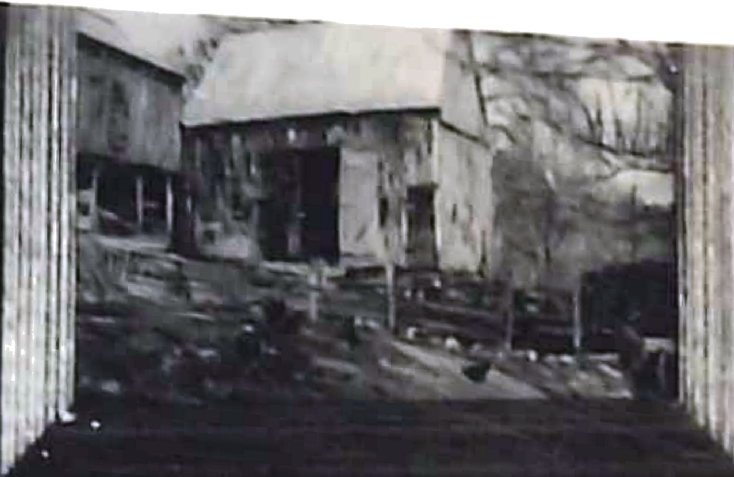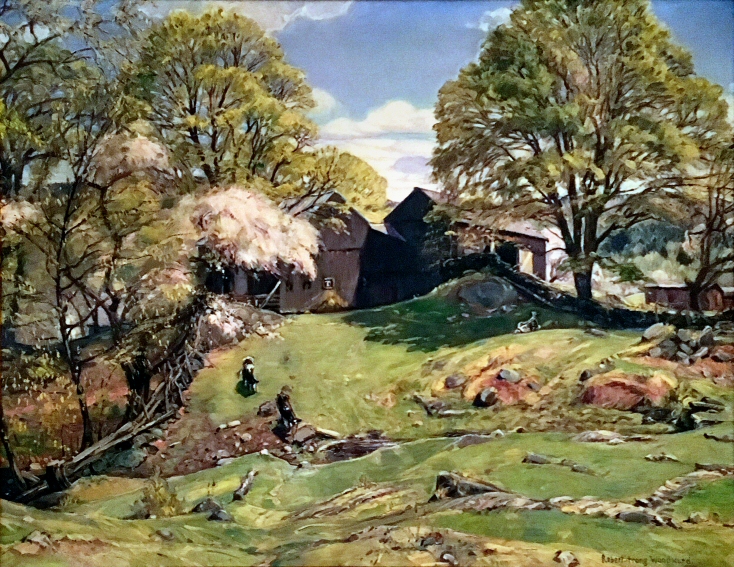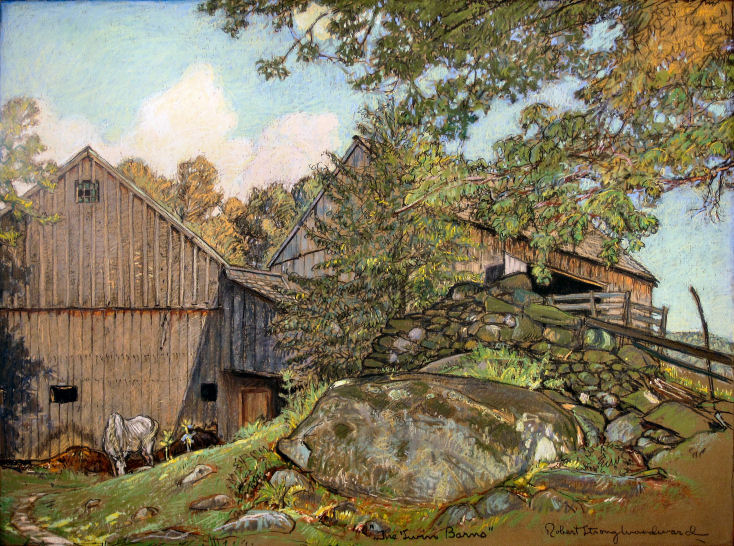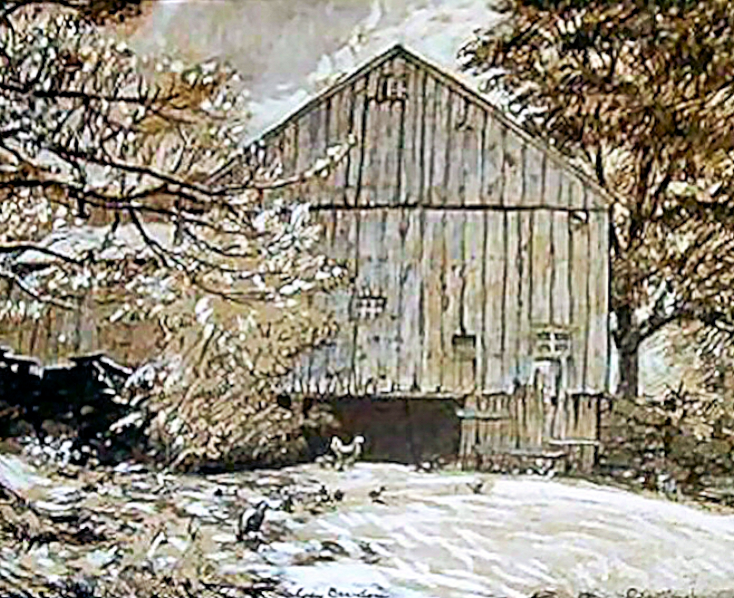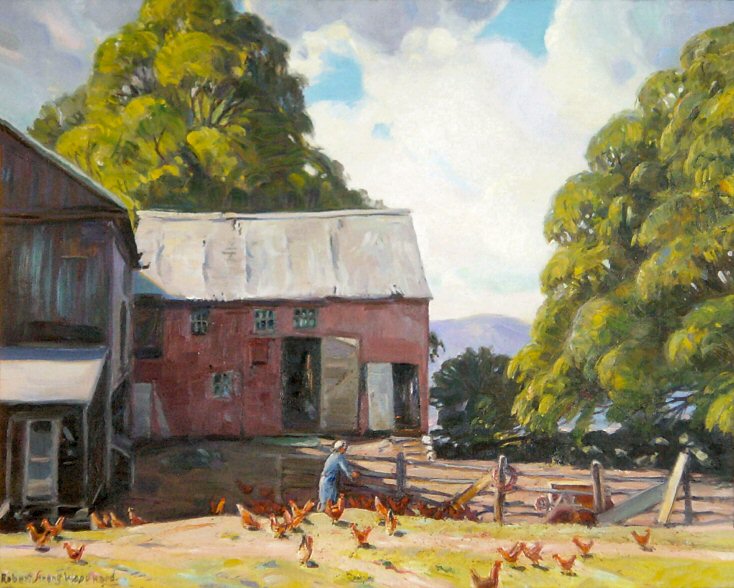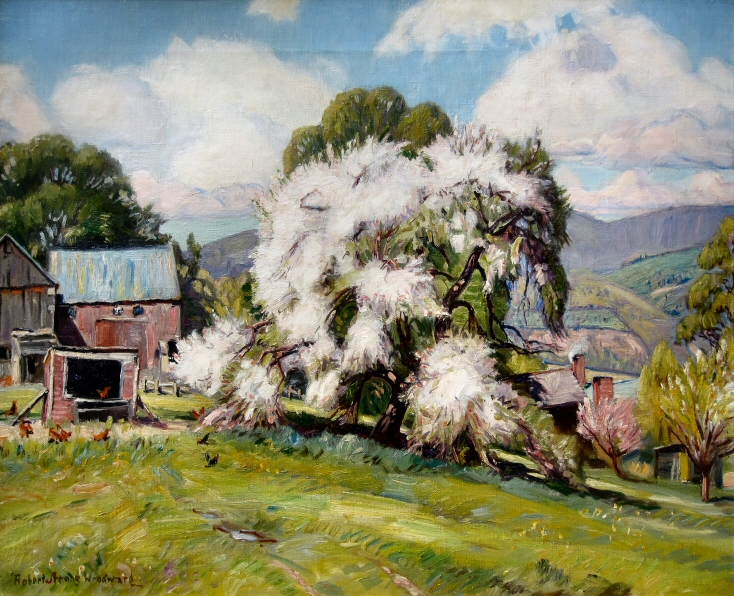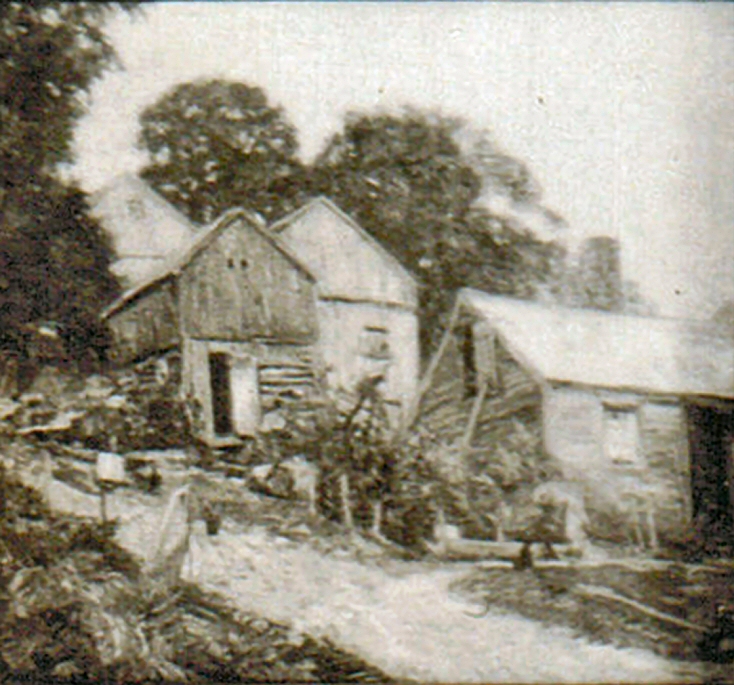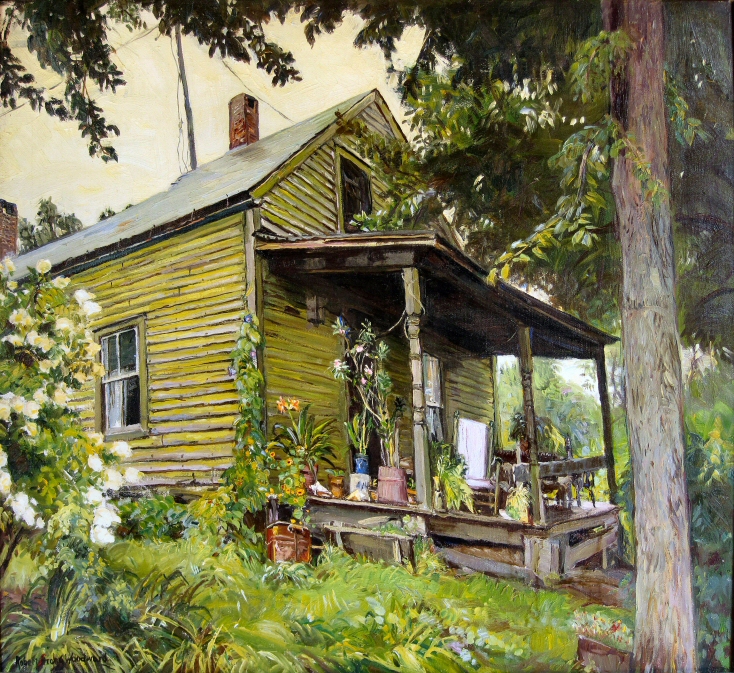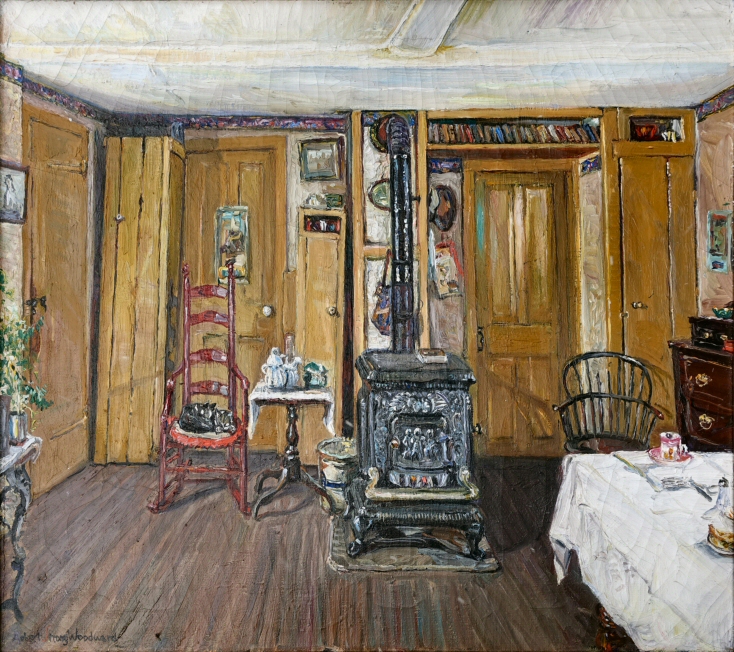Quick Reference
Unknown
Keach Farm, Buckland, MA
Oil on Canvas
Landscape
Barns
Undetermined
Unknown
Unknown
NA
Related Links
- From a May Pasture ➀
- Twin Barns ➁
- The Greening Tree ➂
- Apple Blossom Time ➂
- New England in November ➃
Paintings Referenced on Page:
- See also the...
180.png) Award Winners Gallery to view related pieces.
Award Winners Gallery to view related pieces.
- See also the...
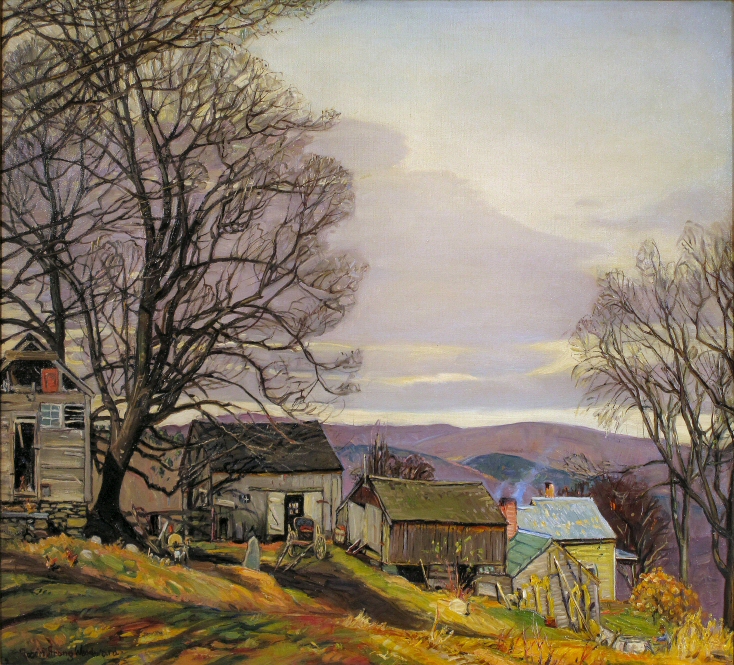 Keach Gallery to view related pieces.
Keach Gallery to view related pieces.
- See also the...
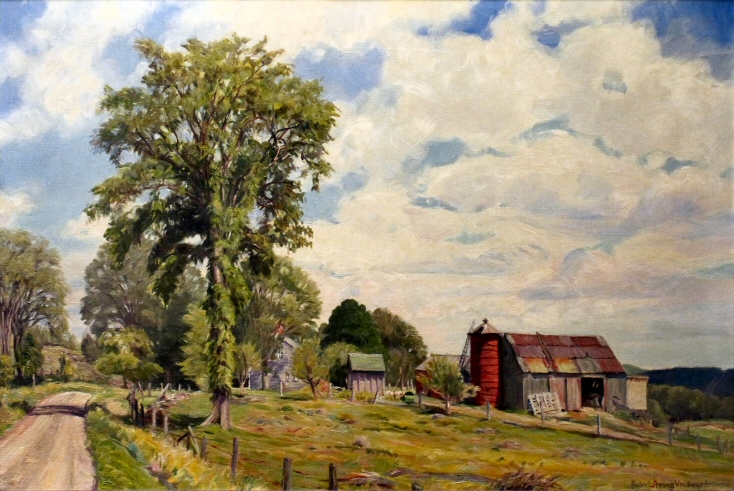 Farms Gallery to view related pieces.
Farms Gallery to view related pieces.
- See also the...
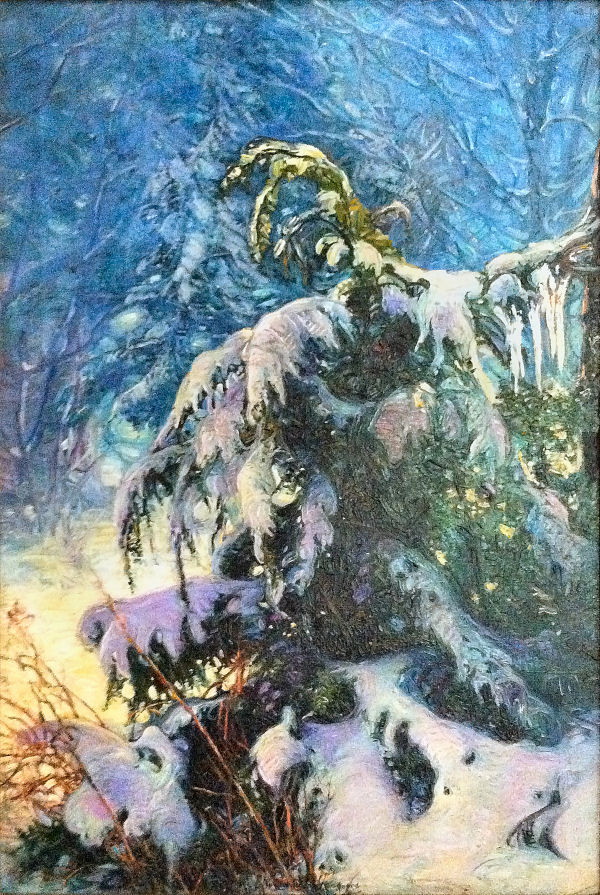 Snow on the Ground Gallery to view related pieces.
Snow on the Ground Gallery to view related pieces.
- See also the...
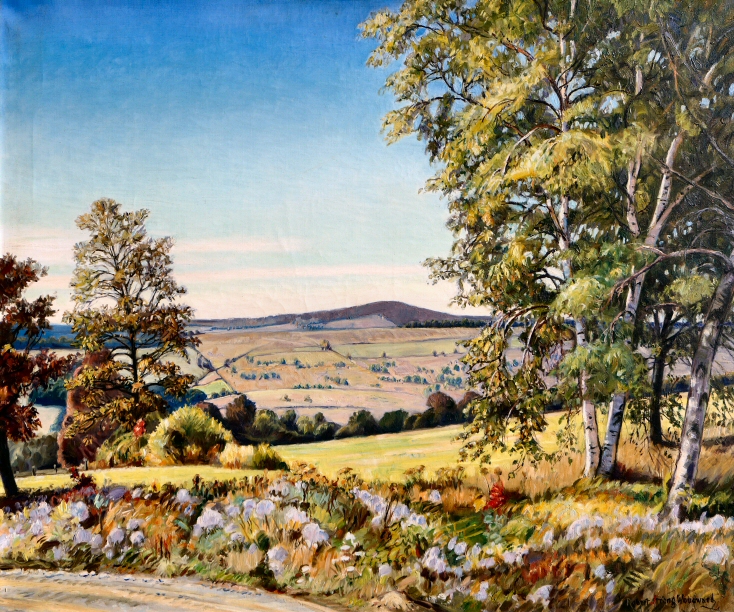 Landscapes & Views Gallery to view related pieces.
Landscapes & Views Gallery to view related pieces.
- See also the...
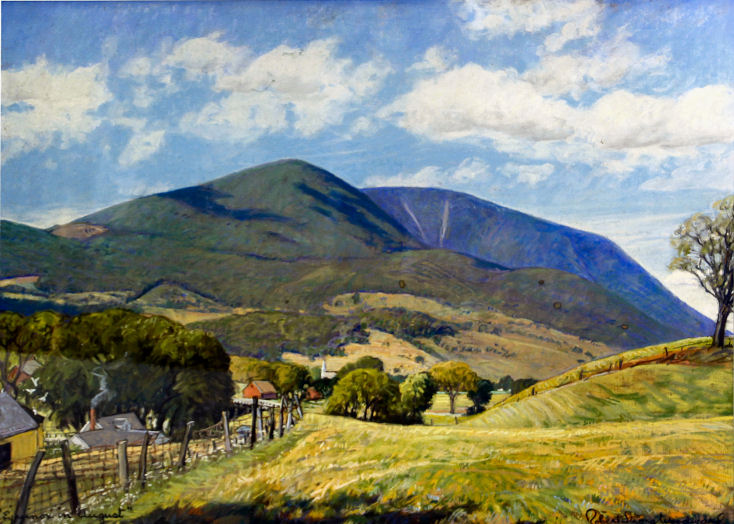 Mountains Gallery to view related pieces.
Mountains Gallery to view related pieces.
- See also the...
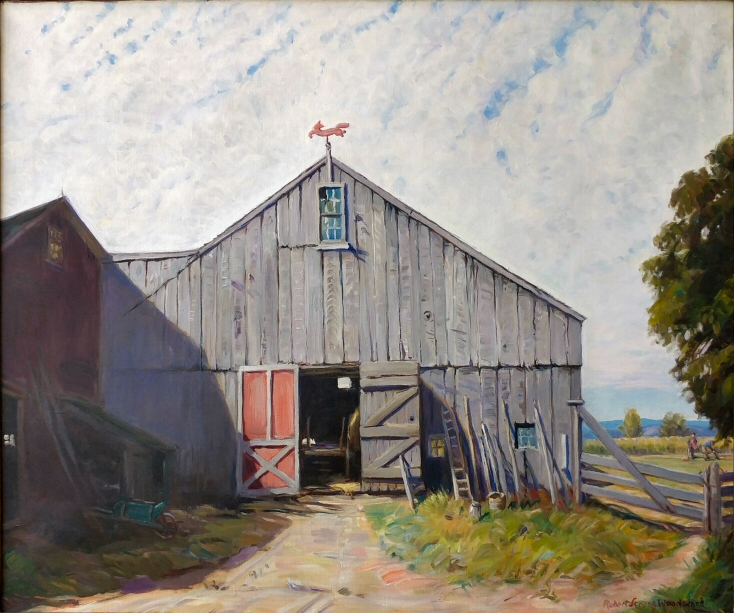 Fences, Gates & Doors Gallery to view related pieces.
Fences, Gates & Doors Gallery to view related pieces.
- See also the...
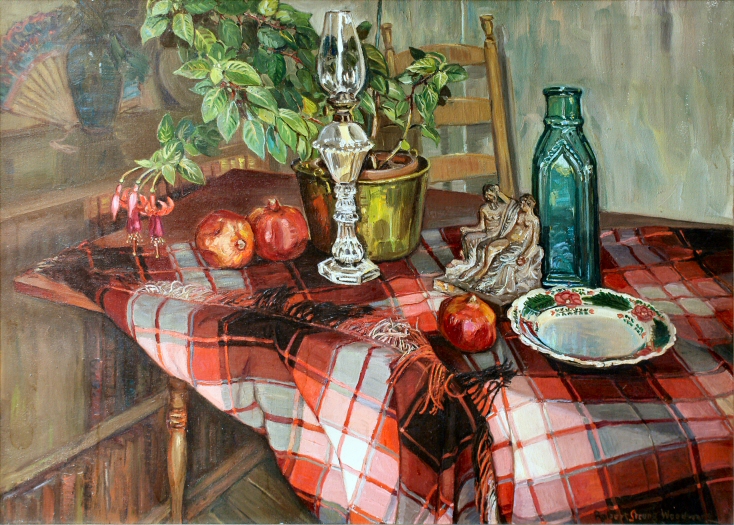 Still Life & Interiors Gallery to view related pieces.
Still Life & Interiors Gallery to view related pieces.
- See also the...
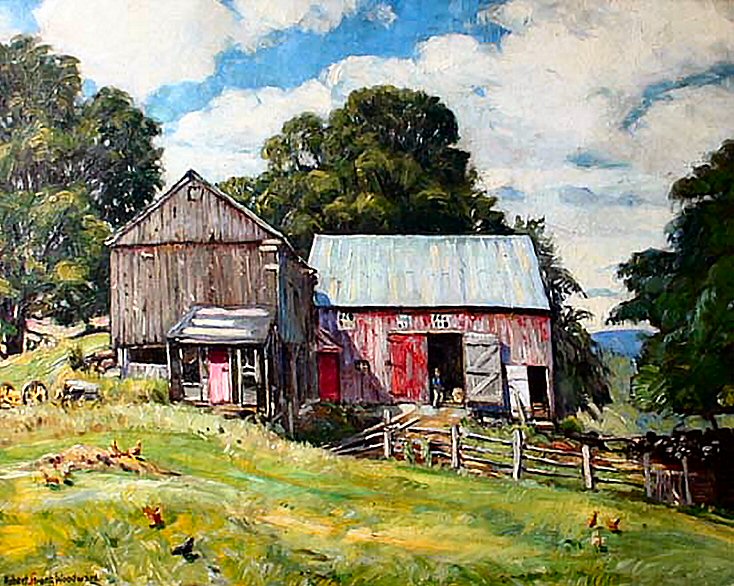 Keach Gallery to view related pieces.
Keach Gallery to view related pieces.
Featured Artwork: Unnamed: The Keach Farmyard, 1928
RSW's Diary Comments
As of now, we do not know of any diary entry that can be linked to this yet-unknown-named painting.
Editor's Note:

 Summer Barns, 1934
Summer Barns, 1934
This painting best shows the slope of the yard.
The image of the painting you see above was discovered in a picture of a room in a home. The photograph was torn across the top. On the back was written, "Farmyard 1928," in ink and the handwriting was unfamiliar to the Keach's The Little Red Barn from just below it near the corner of what Woodward referred to as the The Farmyard. This was very much a favorite subject of the artist. He painted it or it served as a backdrop to 10 of the 24 known Keach Farm paintings. Perhaps, he felt, it held many of the idyllic qualities of what best demonstrates the essence of the New England farm.

 The Last of Winter, 1933
The Last of Winter, 1933
This is the back side of red barn paintings. What you
can't see from this sepia is the back of the red barn
IS NOT painted red. We're not sure it is painted at all.
What you can't see in any of these images is that this scene is also the backside of what Woodward calls the The Twin Barns which make up another 5 known Keach paintings. What is confusing is that it is hard to tell if the entire building is 2 or 3 "barns" because of contrasting perspectives. However, if you view the sepia print to the left we added graphics to, it becomes more clear.
Below, we used much of the bonus material from the painting page for Unnamed- Keach's Drama because of its illustrations of the Keach farm's layout with graphics. It is the only painting we know showing the spread of Keach's farm in its entirety.
We took a look at the entire year of paintings exhibited in 1928 hoping to find a name that would fit this painting's subject. While we did not find anything definitive, there was something interesting. Three paintings, two chalk drawings and one oil, hung between 1926 and 1929 with interesting names, April at Keach's Farm, oil (1926), Keach's Barn in Spring, pastel (1929) and How April Came to Keach's Farm, pastel (1929). We have a description of April at Keach's Farm so we know that is a different subject. However, the two chalk drawings (pastels) give us a possible clue. The specific mention of a barn in, Keach's Barn in Spring, the most promising. Woodward's play on names could mean this painting's name could be something like, "The Farmyard in Spring" or "The Red Barn in Spring."
Additional Notes
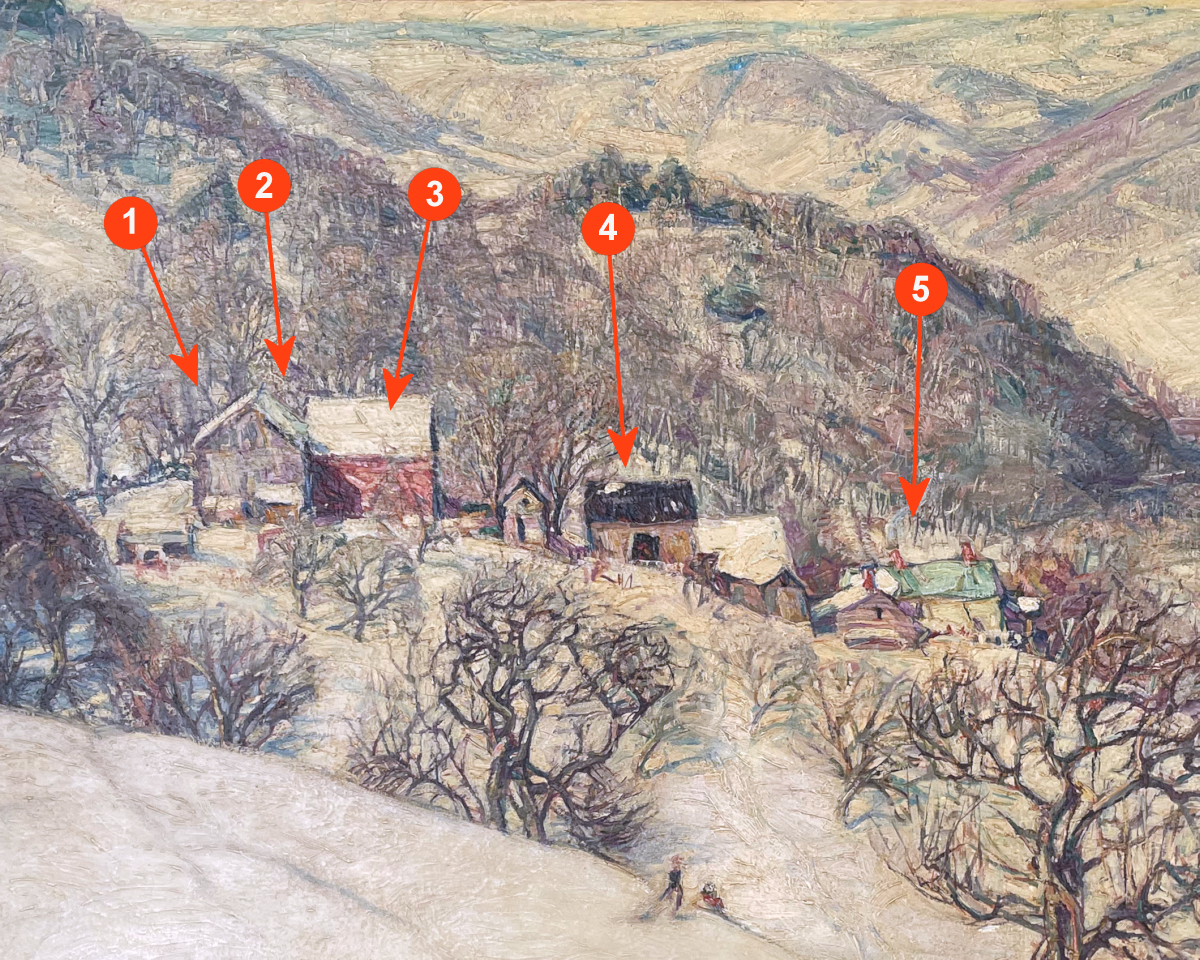
 An illustration of the varying subjects
An illustration of the varying subjects
from the Keach Farm Woodward painted
 Woodward was known for being able to makes the most of a single subject using
various angles, be it a tree, a barn, or a farm. The Keach Farm, was probably his favorite subjects having made
around 25 paintings in his career. To help you, we created the graphic in the image to your right illustrating the
various portions of the farm painted by Woodward. They are as follows:
Woodward was known for being able to makes the most of a single subject using
various angles, be it a tree, a barn, or a farm. The Keach Farm, was probably his favorite subjects having made
around 25 paintings in his career. To help you, we created the graphic in the image to your right illustrating the
various portions of the farm painted by Woodward. They are as follows:
The first is (1) From a May Pasture tucked just behind the (2) The Twin Barns. On the other side of the barns, you can see the vantage point for which he painted (3) The Greening Tree and Apple Blossom Time. Then down the slope from that you can see the various buildings that makeup (4) New England in Novemberand Unnamed: A Sloping New England Farm. Last but not least the main house for which he made (5) Mrs. Keach's Front Porch, as well as inside the home with Keach's Stove and Country Sitting Room.
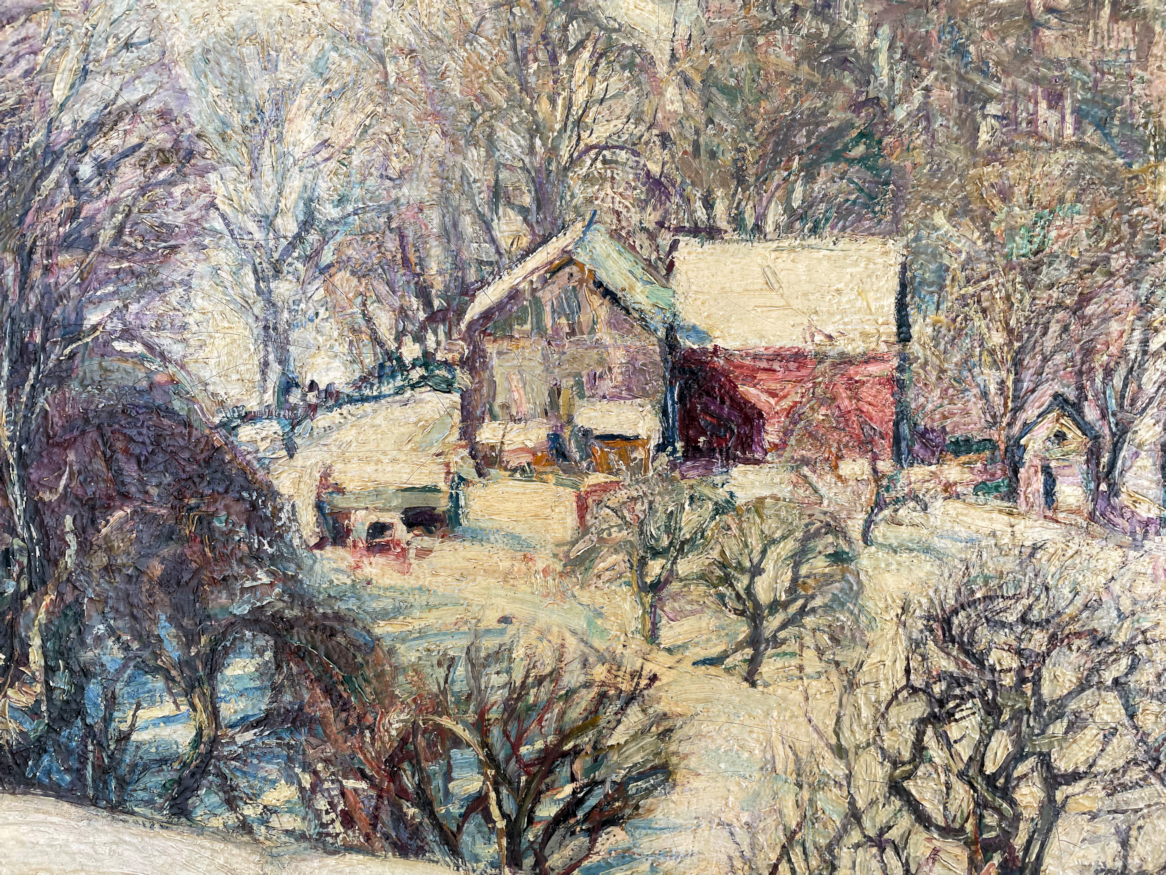
 The top of the farm: 1,2,3
The top of the farm: 1,2,3
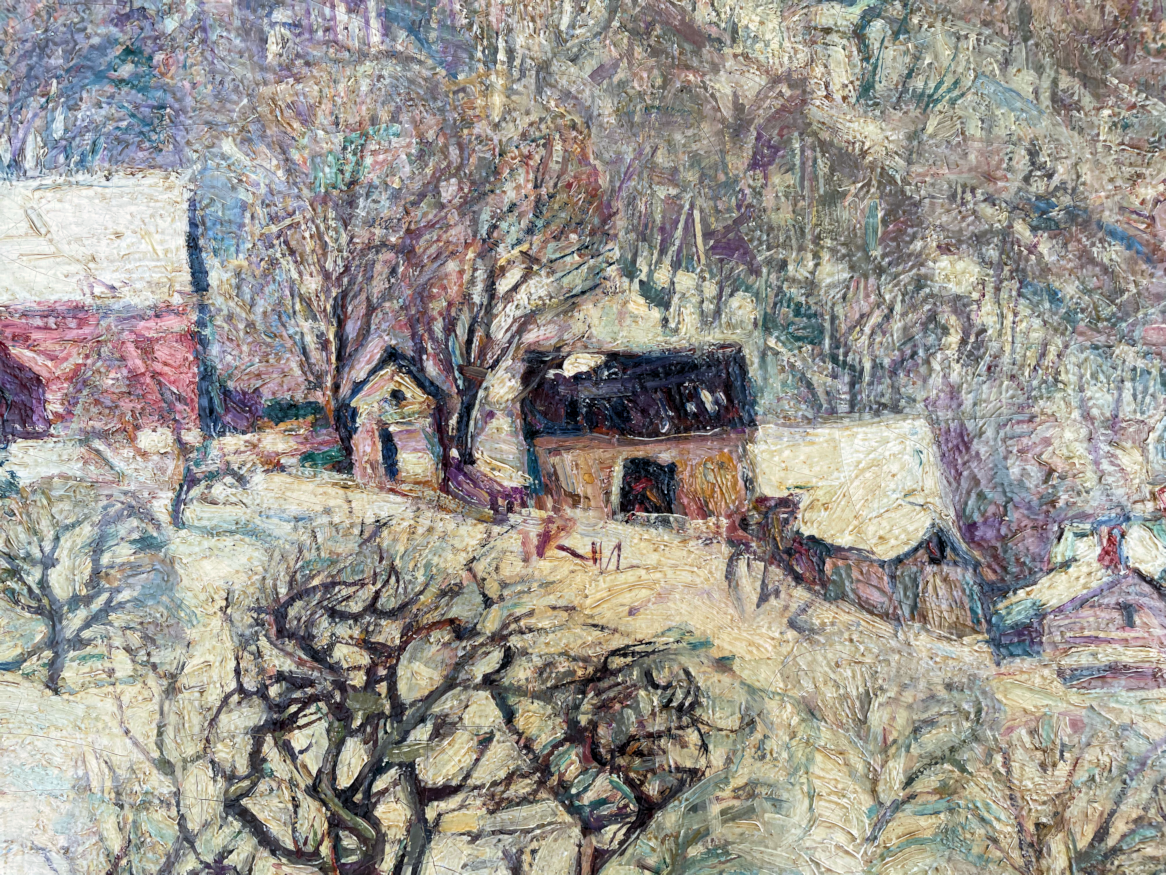
 The middle of the farm: 4
The middle of the farm: 4
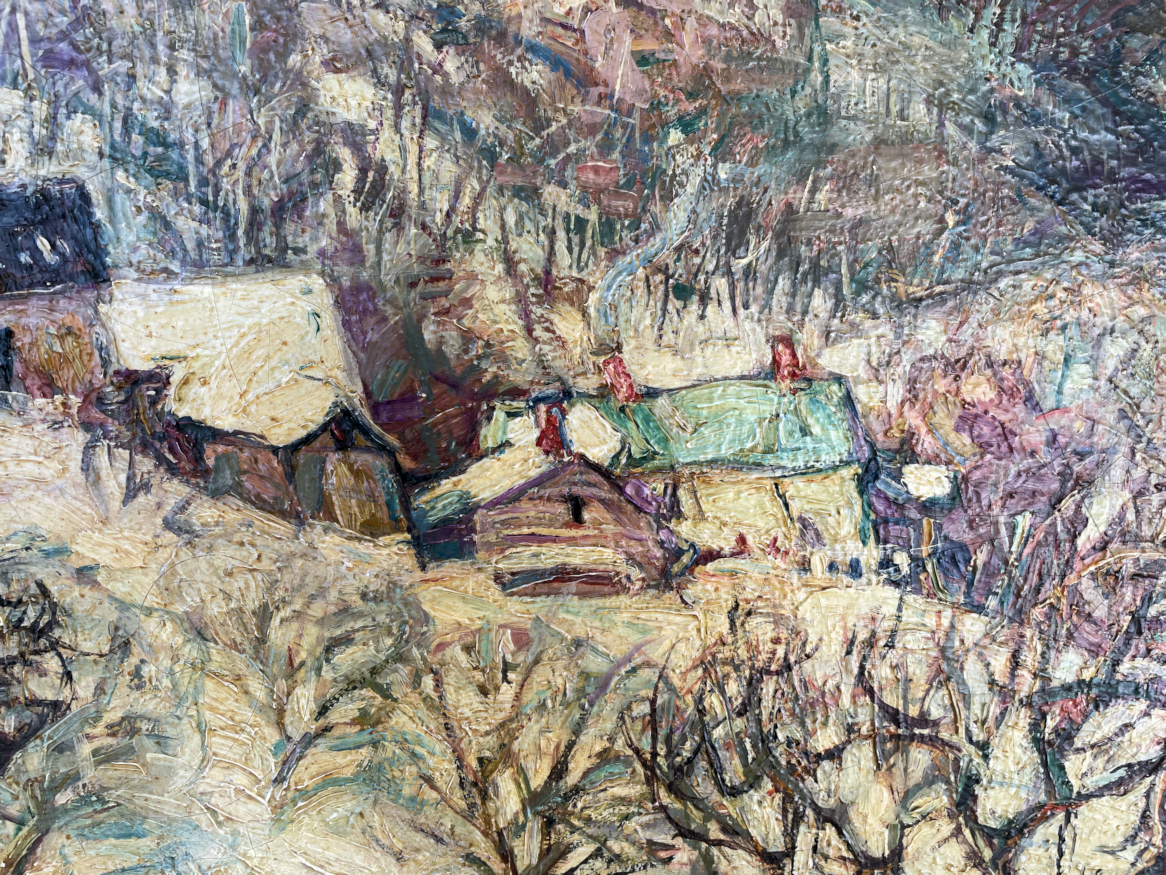
 The lower farm, main house: 5
The lower farm, main house: 5
---------------------------------------------------------------------------------------------------------------------------------
Arrow ①
In the oil painting, From a May Pasture, we get a view of the pasture at the very top of the sloping farm.
There is another painting we believe is from the same pasture but looking up the hill past the grounds of the farm. See
Between Winter and Spring for that perspective.
Arrow ①
Here in the chalk drawing, Twin Barns, we get a closer look at the "twin barns" which are no so much twins
in that that look alike but rather "twins" in the sense that they are connected or if you will, "Siamese Twins." This painting also does a great job illustrating how
the New England Farm built itself into the surrounding terrain using rock-ledge as support for paths and creative carpentry to make it functional. Also note the
manure pile that stains the boards of the barn to the left.
Arrow ②
Grey Boards is a perspective of the backside of the manure stained barn in Twin Barns. A better
vantage point would be to look again at From a May Pasture and follow the tree and fence line on the left of the painting and you see can the open
area (again to the left of the even bigger pile of manure) around the corner from where Woodward likely sat to paint.
Arrow ③
This is a closer look at the other side of the twin barns. Why the one is painted red on just two sides is a mystery. One
would think if you are going to paint a barn, paint the whole thing, and if it is a double barn why not paint both? But the "little red barn" is a favorite subject
of Woodward's. Here the emphasis is on the "farmyard", the fence enclosed area and the women feeding the chickens. Note the extended doorway to the left
of the painting. You can see the same feature in th painting above.
Arrow ③
The Greening Tree not seen in the previous painting, is just a young small tree in the painting above. You can
just make it out if you look closely. It is because the painting of this artwork page is a very early career painting by the artist. One can tell just from the style of
brush application but also... It is signed without the emblematic Red "S" Woodward did not start using until 1922. So The Greening Tree is a painting
made from another painting of the same subject in 1931. The difference between the tree in this painting and The Greening Tree is at least a decade.
Arrow ③
Summer Barns is again a similar scene to the previous two above, however, Woodward has shifted to the left and
back a little farther to include the whole of both barns. Here you get a glimpse of the pasture behind the barns as well as the full snese of the slope the barns rest upon.
Arrow ④
Moving farther down the slope we arrive at the middle portion of the sloping farm. Here in New England in
November
Woodward has positioned himself facing what he refers to as "The Three Barns" in another painting. The three barns are more like sheds. they are not nearly
the size of the twin barns higher on the hill. In this painting, you also get a rear view of the Keach's home. If you look closely at the far right of the painting, you can see the
home's front porch featured in the painting, Mrs. Keach's Front Porch [see below]
Arrow ④
Here is the painting, The Three Barns, where Woodward positions himself just to the side of the rutted road that climbs
up the where the twin barns are located. Actually, we wonder if that is the little red barn's static roof vents, peaking up just behind them. It has to be because there are no
other known buildings between the sets of barns. What is really great about this painting is how it reveals just how steep the climb up the hillside really is. This appears to
be the steepest part of the farm.
Arrow ⑤
Finally, we have reached the bottom of the farm, the faded, chartreuse-colored building to the right of the painting at the top of this page.
This is one of Woodward's favorite paintings. He was terribly disappointed it did not end up in a museum, so much so, he kept it for himself as his own treasured-keepsake.
Everything about the home, suggest it is teetering on a very delicate balance... the lean of the porch's footings, fallen planks, the crooked porch, the tattered clapboards, and
the subtly sagging porch roof. Yet, you see joyous life of blooming plants and bushes and a comfortable chair amongst it all to rest in repose... given you don't tip over sitting
on it.
Arrow ⑤ BONUS
The interior of the Keach's home was painted as well. Here in A Country Interior you can see home decor: the old stove,
a Windsor chair to the stove's right, the New England slat-back rocking chair on its left, an old bureau, some ceramics, a tea set on the table, pottery behind the stove, books
on the built-in bookshelves above the door, and note the two cats sleeping on the slat-back rocking chair.



